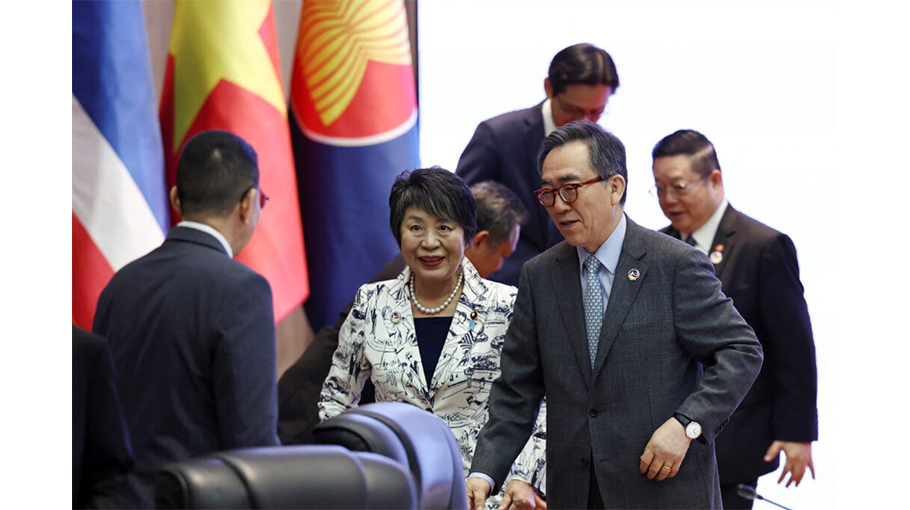If ASEAN is to remain central to the region it must deal with its institutional weaknesses

The value of the Association of Southeast Asian Nations (ASEAN) has always been a subject of debate. While some have praised ASEAN as the region’s most successful organisation, others see it as a talk shop and criticise its slow response to change and failure to implement agreements.
ASEAN has been under fire for its failure to put an end to the Myanmar crisis, resolve the South China Sea dispute and find an effective response to intensifying US–China rivalry.
But ASEAN’s main function is regional reconciliation. Emerging out of the ashes of confrontation between Indonesia and Malaysia, ASEAN was primarily meant as a collective effort to prevent conflicts and manage disputes among its original five founding members. The opportunity to create regional peace presented itself when Cambodia, Laos, Vietnam and Myanmar became full members.
One of ASEAN’s greatest achievements has been its ability to prevent disputes among member states from turning into open armed conflicts. No ASEAN member state envisions going to war with another ASEAN member state. Even when a dispute has arisen — such as that between Thailand and Cambodia in 2011 — ASEAN managed to prevent it from becoming a full-fledged conflict.
While it is perfectly valid to criticise ASEAN for its inability to resolve internal conflicts and conflict between an ASEAN member state and an extra-regional power, it should be remembered that initially ‘ASEAN was not about formal dispute settlement or conflict resolution per se, but rather about creating a regional milieu in which such problems either did not arise or could be readily managed and contained’, as the late British scholar of Southeast Asia Michael Leifer correctly put it.
ASEAN was founded as a process of conflict avoidance. ASEAN governments take pride in referring to this mechanism as the ‘ASEAN way’. But such rhetoric does not mean that ASEAN can evade the demands that it should do more and extend its role beyond Southeast Asia.
ASEAN extended its model of regional security through the creation of the ASEAN Regional Forum in 1994. At that time, ASEAN began to see itself as the primary driving force in managing the interaction of regional states with extra-regional powers, assuming the role as the manager of the regional order.
This led to the self-assigned depiction of ASEAN as a central player in a region where diverging interests among major powers intersect. The concept of ‘ASEAN centrality’ has become the basis of ASEAN’s external relations. The proliferation of ASEAN-centred institutions, including the ASEAN Plus Three in 1993 and the East Asia Summit in 2005, were seen as satisfactory answers to the challenges of the day in the immediate years after the Cold War ended.
But the context within which those institutions operate has changed significantly. The return of power politics, in which great powers become the shapers of regional affairs, presents an immense challenge to ASEAN’s ability to preserve its centrality in the 21st century. To complicate things further, ASEAN’s own internal problems have also multiplied.
One challenge that ASEAN faces is in maintaining unity among its members. Heightened rivalry between the United States and China might polarise ASEAN. Strategic rivalry would make it difficult for some member states to resist the temptation to choose. Yet, collectively, member states want to avoid being entangled in great power competition and agree that maintaining strategic autonomy is the best policy option for ASEAN.
If unity cannot be maintained, ASEAN’s role as a manager of regional order will diminish and ASEAN’s centrality will come under challenge. This is manifest in the emergence of regional minilaterals as extra-regional powers argue that ASEAN is not well-equipped to manage the implications of the return of power politics. Dissatisfaction grows with ASEAN’s approach to regional security that over-emphasises norms and process.
Another challenge is the imperative of maintaining ASEAN’s strategic autonomy. Southeast Asia will likely become the central arena for great power rivalry. ASEAN should make it clear that it does not wish to see a Pax-Americana or Pax-Sinica. It is not in anyone’s interest to have the region dominated by one hegemonic power or another. Everyone will be better off with a multipolarity where all contribute to regional stability and prosperity.
To address these challenges, ASEAN’s existing institutional set up might no longer be adequate. ASEAN needs to examine the inadequacies of its institutions and strengthen them whenever possible. ASEAN does have convening power and should use it to reinvigorate the importance of multilateralism in the region. Surviving great power competition will require ASEAN to strengthen its capacity and institutional effectiveness. This requires a deeper look at the ASEAN Charter, and for it to be amended as required.
ASEAN must devise a more coherent mechanism for conflict prevention, crisis management, and conflict resolution so that it can address internal problems such the Myanmar crisis. The 2004 Vientiane Action Program 2005–2010, for example, clearly stated that ‘an early warning system based on existing mechanisms to prevent occurrence or escalation of conflict’ should be developed, but no specific actions were suggested. This could be included in the role and function of the ASEAN Institute for Peace and Reconciliation.
To address extra-mural challenges, the East Asia Summit still provides the best promise of multilateral security cooperation in the Indo-Pacific. The Summit clearly requires further institutionalisation. This, for example, could include the agreement to set up a sherpa system, a joint chair with a non-ASEAN member, and even a secretariat.
But the strengthening of ASEAN’s institutions, while urgently needed, will always be an incremental process.
Rizal Sukma is a Senior Fellow at the Centre for Strategic and International Studies, Jakarta, and was Indonesia’s ambassador to the United Kingdom, Ireland and the International Maritime Organization from 2016 to 2020.
Source: East Asia Forum




